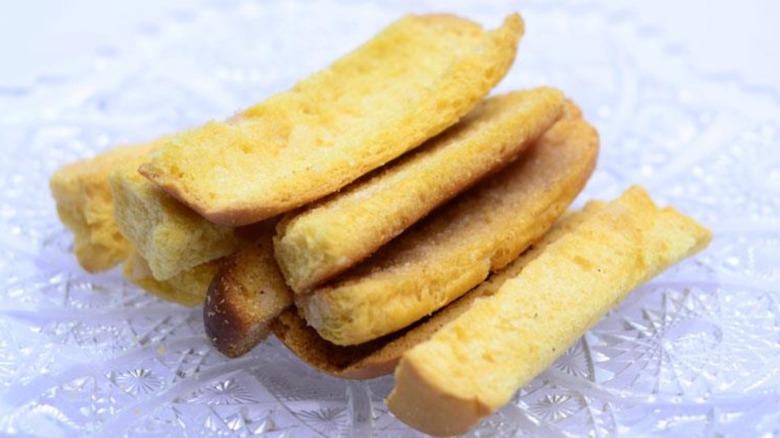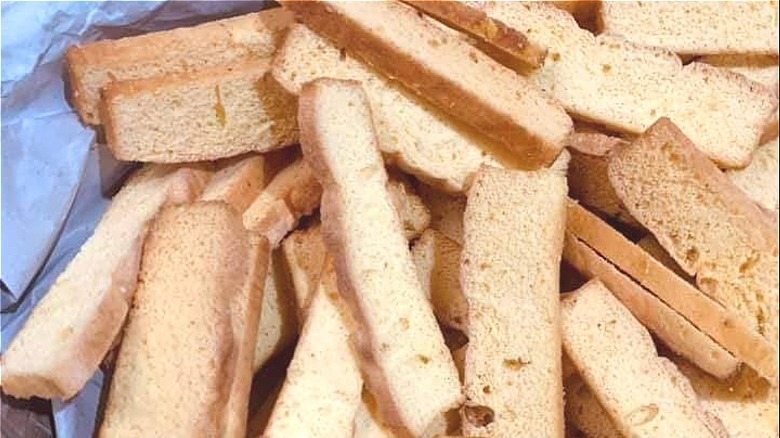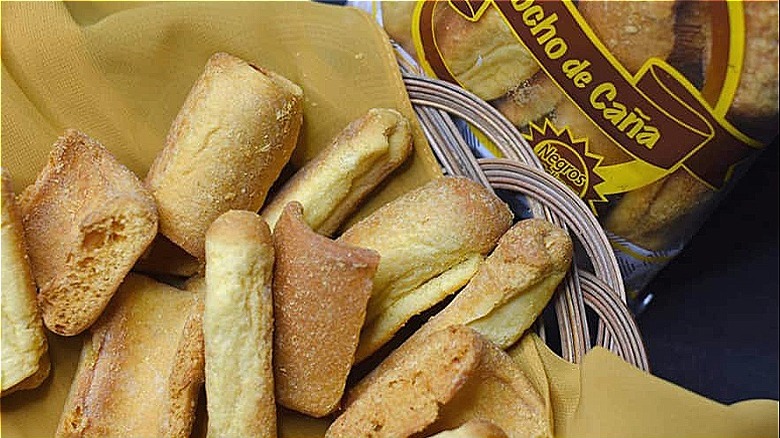Biscocho De Caña: The Sugary Filipino Bread You Should Try
Twice-baked bread may not be high on everyone's list of "must have" foods, but it is a delicacy in the Philippines, where enterprising bakers from the central Philippine city of Iloilo have not only found a way to repurpose stale bread, they've made it an in-demand snack enjoyed around the country today.
Biscocho de caña is said to have been popularized by an Iloilo couple, Dr. Carlos Guadarrama and his wife, Therese J. Guadarrama, who first sold the treat at their family-run bakery, "Biscocho Haus," in 1975, according to About Filipino Food. And while many Filipino culinary traditions were inspired by Spain, contrary to what its name might suggest, the creation was neither inspired by nor is it a copy of Spanish sponge cake, or "bizcocho." Rather, the now iconic biscocho de caña is closer in style and substance to Italian biscotti; the name itself comes from Medieval Latin word "biscoctus," or "twice baked."
Biscocho allows for old bread to be recycled
Biscocho de caña is usually made with sliced bread or pieces of pan de monja or monay — the country's popular dense bread bun, which features a deep score in the middle and appears to have two rounded "cheeks." And while many types of biscocho come dressed with butter or margarine, biscocho de caña comes only enhanced with a bit of sugar.
While the Guadarramas' take on this humble snack might have put it on the Philippines' culinary map, it's not difficult to imagine this as the family's way of recycling and repackaging unsold breads, in order to prevent waste. In an essay that examines the Philippine's different homegrown baked treats, novelist Gilda Cordero-Fernando says vendors didn't hesitate to "recycle" unsold bread by turning it into biscocho or bread pudding, the latter of which would be sold by the slice, according to New Gen Baker.
Other types of biscocho
While biscocho de caña might be the best known incarnation of this popular snack, there are other biscochos too. Even the venerable Biscocho Haus offers three types of biscocho: regular biscocho, which is bread made with both butter and sugar; biscocho de caña, which is made with just a touch of sugar and butter and can be enjoyed along with savory dishes like pasta; and biscocho principe, which is made with double baked slices of butter cake.
Biscocho can also be found outside of Iloilo, in other parts of the country and in different forms. Biscocho de sebo hails from the north and is done in the shape of a tie. It is much greasier, although it is not as sweet. Biscocho de rosca isn't a biscocho per se, but a crescent-shaped cookie. Biscocho de Manila are small round slices of bread that are baked in margarine and covered in sugar.


